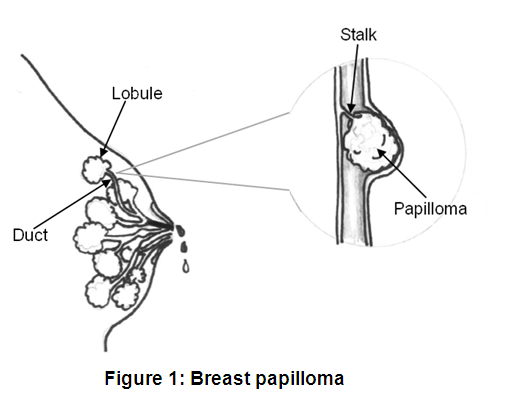Breast papillomas (or intraductal papillomas) are wart-like growths in a breast duct. They are usually seen on your breast imaging. They are not cancerous (benign).
A papilloma attaches to the lining of a breast duct by a stalk. Papillomas that are large enough can block the duct.
You can have 1 or more papillomas in a duct or in a few ducts. Breast papillomas are usually painless. We don't know why they happen.
Breast papillomas most often happen when you're between the ages of 35 and 50.

Symptoms
Usually, you will not be able to feel a breast papilloma. It will often be behind the nipple but can be elsewhere in the breast.
The most common symptom of a breast papilloma is a sudden and unexpected clear or bloody discharge that comes out on its own from a nipple.
Diagnosis
A healthcare provider will usually diagnose a breast papilloma with an ultrasound and less often with a special x-ray called a galactogram.
A breast papilloma is not cancerous, but it can be related to a more serious lesion nearby. Your healthcare provider may send you for a biopsy (a small tissue sample) of the papilloma to decide if you need more tests or if it needs to be removed.
Most breast papillomas do not need to be removed unless they keep causing symptoms, such as nipple discharge.
